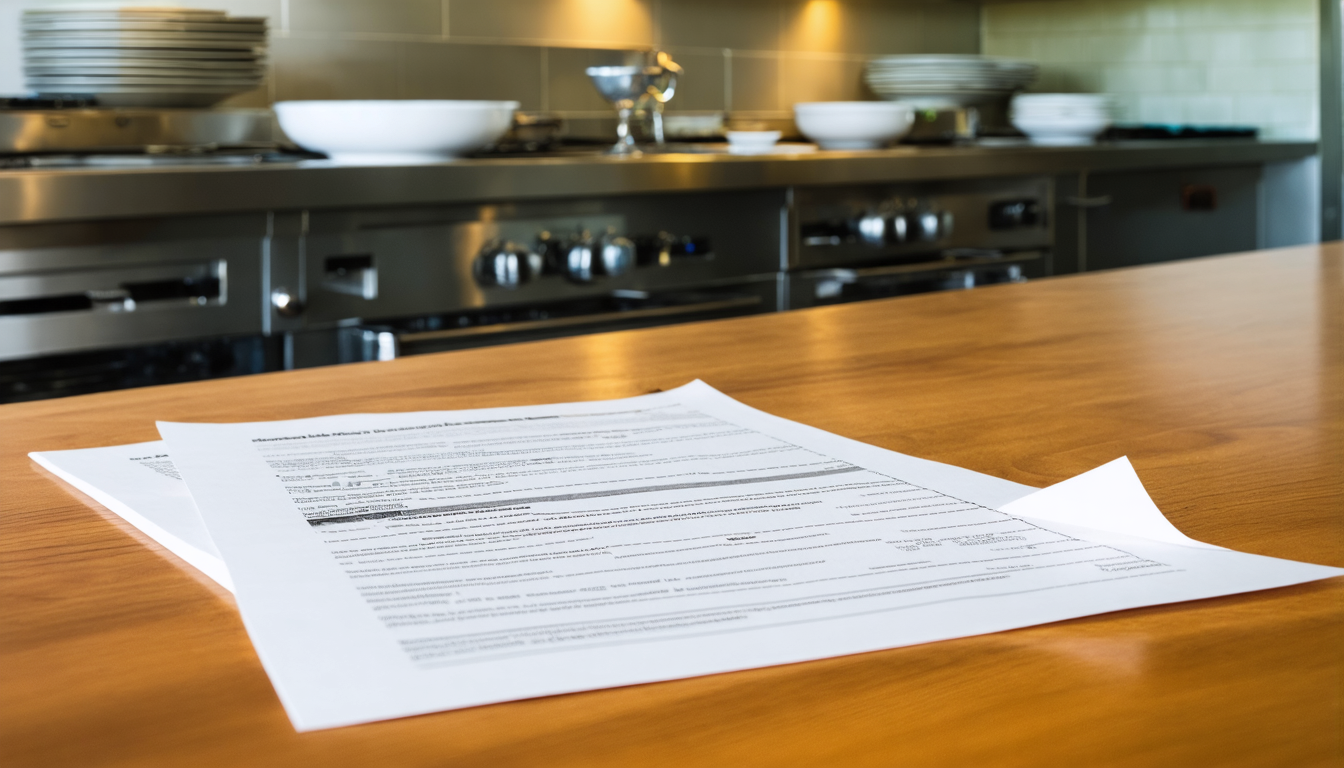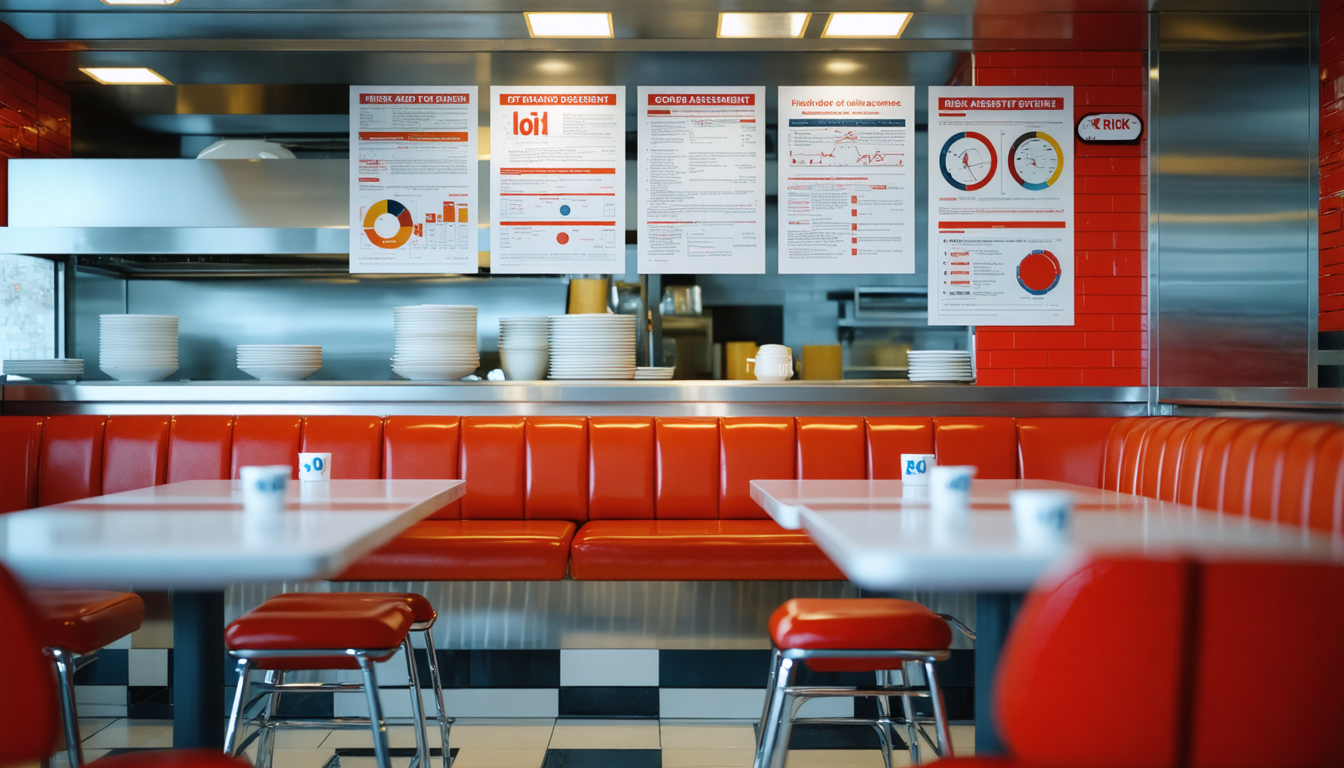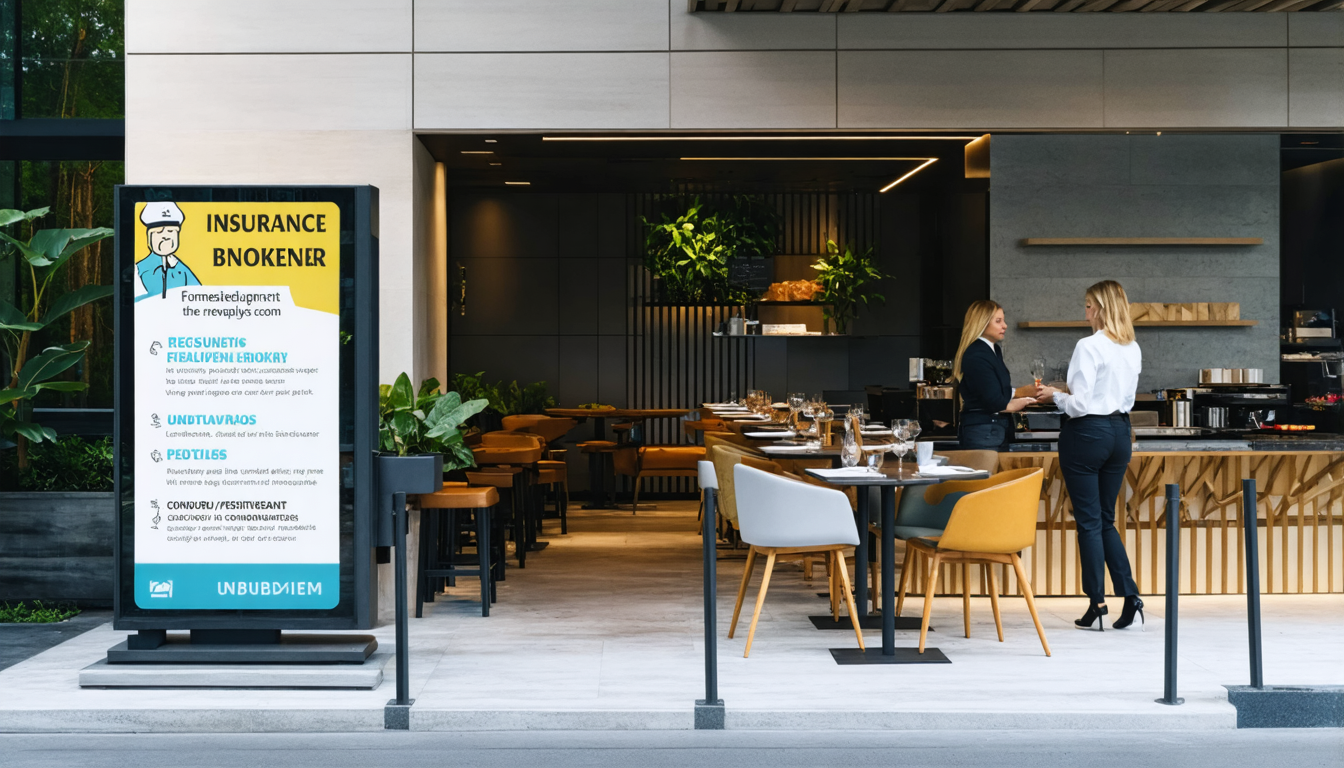- Best practices for choosing restaurant property insurance
- Understanding restaurant property insurance coverage
- Identifying unique risks in restaurant operations
- Evaluating coverage limits and deductible options
- Navigating additional liability coverage for restaurants
- Working with experienced insurance brokers
- Comparing quotes from multiple insurance providers
- Avoiding common pitfalls when selecting a policy
- Regularly reviewing and updating your insurance needs
- Future-proofing your restaurant with evolving insurance trends
- Conclusion
1. Best practices for choosing restaurant property insurance
Restaurant property insurance protects your business from unexpected events. To make sure you choose the right coverage, it’s important to follow best practices that fit the unique needs of your restaurant. Knowing what insurance covers and what risks you face can save you money and stress.

2. Understanding restaurant property insurance coverage
Restaurant property insurance covers damage to your building, equipment, furniture, and inventory. This type of insurance helps you bounce back after a fire, theft, or other covered loss. When you review a policy, make sure you understand what is included and what is excluded.
Many policies may cover basic events like fire and storm damage. However, you might need extra coverage for things like water damage from leaks, or equipment breakdowns. Read the details of any coverage and ask your insurance provider for clarification if needed.
3. Identifying unique risks in restaurant operations
Every restaurant is unique. You have specific equipment like ovens, fryers, and refrigeration units that come with risks. Restaurants also face hazards such as food spoilage, liability claims from customers who get sick, and damage from natural disasters. Identifying these risks is key.
Conduct a detailed risk assessment, looking at your kitchen, dining area, storage, and even the exterior of the building. Knowing which areas are most vulnerable lets you discuss specific needs with your insurance provider. By understanding the risks inherent in your operations, you can build a policy that minimizes downtime after an incident.

4. Evaluating coverage limits and deductible options
Choosing the right coverage limits ensures that your restaurant can recover after a loss. Coverage limits refer to the maximum amount an insurance policy will pay. If your policy limit is too low, you might not have enough money to replace damaged property or start back up after a disaster. On the other hand, higher limits come with higher premiums.
Evaluate your restaurant’s value and operational costs carefully. Discuss your balance sheet with your broker and determine a limit that reflects all necessary expenses. Don’t forget to consider deductibles as well. Your deductible is the amount you pay out-of-pocket before insurance kicks in. You might decide on a higher deductible if you want to lower your premium.
However, ensure that the deductible is affordable for your business in case of an emergency.
5. Navigating additional liability coverage for restaurants
Restaurant property insurance often comes with extra liability coverage. Additional liability coverage is a safety net for situations where a customer or staff member gets hurt on your property.
Accidents such as slips and falls are common in busy kitchens and crowded dining rooms. Liability coverage can also protect you against claims from faulty equipment or food poisoning incidents. Knowing the proof of your incident history and risk profile helps your provider tailor liability coverage to your needs.
Ask your broker about umbrella policies or additional endorsements that might extend your coverage. This additional layer of insurance can safeguard your restaurant if a claim exceeds the general policy’s limits.

6. Working with experienced insurance brokers
An insurance broker who understands the restaurant business can be a huge asset. They know the ins and outs of different policies and can guide you to the best coverage options. Experienced brokers can help you see the hidden benefits—and potential pitfalls—in policies aimed at restaurants.
A good broker will ask about your daily operations, maintenance routines, and long-term goals before suggesting coverage options. They can also negotiate on your behalf, ensuring you receive fair pricing without compromising on essential protections. When looking for a broker, check reviews and ask for references from other restaurant owners. Their specialized experience can make a significant difference in managing risks effectively.
7. Comparing quotes from multiple insurance providers
It pays to shop around. Comparing quotes from multiple insurance providers ensures that you get competitive rates and comprehensive coverage. Each insurance company may offer a slightly different package, so take the time to evaluate the specifics of each quote you receive. Look beyond the headline premium price.
Dive into policy details and determine whether they meet the unique risks and needs of your restaurant. Ask about fees, additional benefits, and exclusions. While it might be tempting to choose the lowest quote, make sure your policy covers all key risks. Maintaining a list of questions during the process helps you compare quotes more accurately. An informed decision today can save your restaurant from financial losses tomorrow.
8. Avoiding common pitfalls when selecting a policy
When selecting an insurance policy, there are pitfalls you should watch out for. One common mistake is ignoring the fine print. Be sure to read every detail to avoid surprises when filing a claim. Another error is failing to update your coverage as your business grows. Your insurance needs change as you invest in new equipment or expand your dining area.
Over-insuring is another risk; paying for unnecessary coverage can reduce your bottom line. Ask your broker or provider to review your current policy periodically. Additionally, don’t overlook exclusions. There might be conditions the policy does not cover—such as damage from floods or earthquakes—so ask if these risks are applicable to your restaurant. Knowing these details helps you make a more informed choice.
9. Regularly reviewing and updating your insurance needs
A restaurant business is never static. Regularly reviewing your insurance needs is essential to maintain adequate protection. When you first secure property insurance, it might have perfectly met your needs. However, as your menu evolves, your facility expands, or you add outdoor seating, additional risks can develop.
A periodic audit with your insurance broker can reveal outdated coverage or gaps that need addressing. Make it a point to review your policy every year or after major changes. Continuously updating your policy ensures you are never underinsured and that your premiums reflect any new risks.
This proactive approach not only protects your investment but also enables smoother operations in times of unforeseen events.
10. Future-proofing your restaurant with evolving insurance trends
The world of insurance is continuously evolving. As technology advances and new risks emerge, staying updated on trends ensures you do not fall behind.
One emerging trend is digitization in the claims process, allowing quicker responses and more accurate evaluations. Other trends include customizable policies and risk management tools that help you better understand your exposure. Keeping in touch with your broker and joining industry groups can provide insights into these new trends.
Additionally, consider incorporating business interruption coverage that reflects not only physical damage but also supply chain disruptions and other modern challenges. Future-proofing your restaurant means planning for both today’s needs and tomorrow’s uncertainties.
Conclusion
Selecting restaurant property insurance is more than buying a policy; it is about integrating risk management into your daily operations. By keeping abreast of policy details, working closely with expert brokers, and comparing multiple quotes, your restaurant will be well-prepared to handle the unexpected.
Avoiding common pitfalls and planning ahead for future trends gives you confidence on busy nights and quieter days alike. Taking these steps today ensures that your restaurant has the right protection tomorrow, allowing you to concentrate on serving excellent food and building lasting customer relationships.
